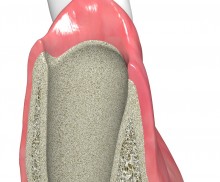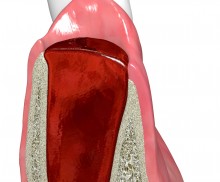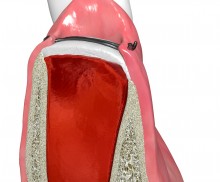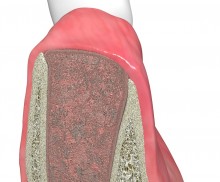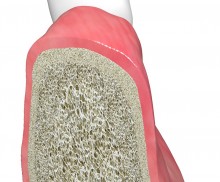Socket seal technique
|

Upon tooth extraction, the alveolar socket fills with blood. The injury activates a coagulation cascade, which leads to the formation of a fibrin clot. This blood coagulum is the starting point of the healing and regeneration of the socket. Signaling factors in the blood promote blood vessel formation (angiogenesis); they also attract circulating progenitor and immune cells as well as connective tissue cells, which then migrate into the coagulum and form the granulation tissue. Within a few weeks, the granulation tissue is reorganized, and the osseous regeneration of the socket begins. Thus, the formation of a stable coagulum is of great importance for the regeneration of the socket; this can be achieved by sealing the socket.
The socket seal technique aims to protect the socket cavity and prevent a soft tissue collapse and shrinkage of the keratinized gingiva after extraction and prior to implantation. Following extraction, the socket may be sealed with either a soft tissue transplant or a collagen matrix that is sutured to the gingival margins of the socket. Alternatively, the socket may be filled with a bone graft material prior to sealing. The transplant supports the stabilization of the blood clot and protects it from bacterial contamination and physical damage.
For this particular indication, botiss has designed a circular mucoderm® matrix that can be easily applied during the socket seal technique and does not need further cutting.
Please Contact us for Literature.
